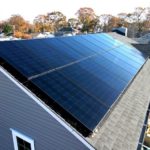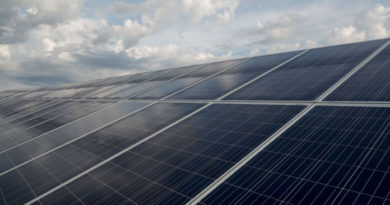Strategize Your 2020 Clean Energy Transition with the 26% Solar Tax Credit
 Solar continues to be the safest, most secure investment opportunity on the market today, enabling homeowners and businesses to lock in the lowest possible energy cost and achieve long-term economic and environmental returns that are unmatched on Wall Street.
Solar continues to be the safest, most secure investment opportunity on the market today, enabling homeowners and businesses to lock in the lowest possible energy cost and achieve long-term economic and environmental returns that are unmatched on Wall Street.
Many of our customers have invested in solar as their retirement plan, and the investment even allowed Barry Fifield to retire early. There’s still time this year to join our community of thousands of happy solar owners and receive the 26% federal tax credit available before it steps down to 22% in 2021.
Alternatively, your electric bill from the utility will continue stepping up, over and over again. New England has some of the highest electric rates in the country, following a 3% long-term annual increase. Central Maine Power and Eversource are two of the many utilities that increased their rates this past winter, and we can expect to see more coming soon as July is normally New England’s highest month for electric consumption.
Annual Rate Escalation
What’s more, utilities like CMP and Eversource are immune to fluctuations in revenue – how many businesses do you know of that enjoy a guaranteed profit margin? They benefit from “revenue decoupling,” a mechanism that protects their revenue from their own irresponsible operation or from declining power demand.
This means they enjoy built-in earnings protection – like the recent rate hike resulting from their storm cleanup last fall, or the upcoming rate hike to compensate for the disconnection moratorium they’ve obliged during the COVID-19 pandemic.
Fitch Ratings, one of the “Big Three” credit rating agencies, puts it plainly in their assessment of this business model – utilities like these are monopolies free from responsibility:
“The utilities have a low-risk business profile. They provide an essential service, benefit from monopolistic characteristics in their service territories, earn regulated returns on investment and have no commodity exposure.”
 The writing on the wall is that the private utilities whose territories we live in are renting us electricity, which we pay more and more for, year after year (for the same amount of electricity) – until we go solar.
The writing on the wall is that the private utilities whose territories we live in are renting us electricity, which we pay more and more for, year after year (for the same amount of electricity) – until we go solar.
Tax Credit & Solar Loan “Power Duo”
Upfront cost has been a barrier to breaking free in the past, but the great news is that there are numerous solar loan options that allow homeowners to include heat pumps or batteries with their solar PV and complete the clean energy transition by simply trading in their old energy bills for dirty power and fossil fuel with a single clean energy loan!
Whether you’re installing panels on your roof, in your field, or joining a community solar farm, a solar loan allows you to eliminate the downside of rising energy costs with a no-money-down investment while still capturing the upside of increased home value, the current federal tax credit before it is reduced, the additional value of Renewable Energy Certificates, and the overall benefits of a cleaner and more comfortable home.
You could also go the whole nine yards this year and take advantage of the federal EV tax credit as well as other state-level incentives, and start driving on sunshine. If you own a plug-in vehicle and you had charging equipment installed in the past couple of years, or plan to this year, don’t forget that the separate 30% federal tax credit for EV charging equipment has been extended retroactively to cover any installations through the end of this year!
We hope you seize this opportunity and give us a call – if you’ve been considering solar for a while, this is the year to do it. As always we offer free site evaluations and consultations to determine the best fit for your situation. Please reach out with any questions.
Our local economies will benefit all the more from clean energy investments during uncertain times, keeping roughly 3 times as many dollars than are exported for fossil fuel energy!
Original Source: https://www.revisionenergy.com/blogs/strategize-your-2020-clean-energy-transition-with-the-26-solar-tax-credit/
















